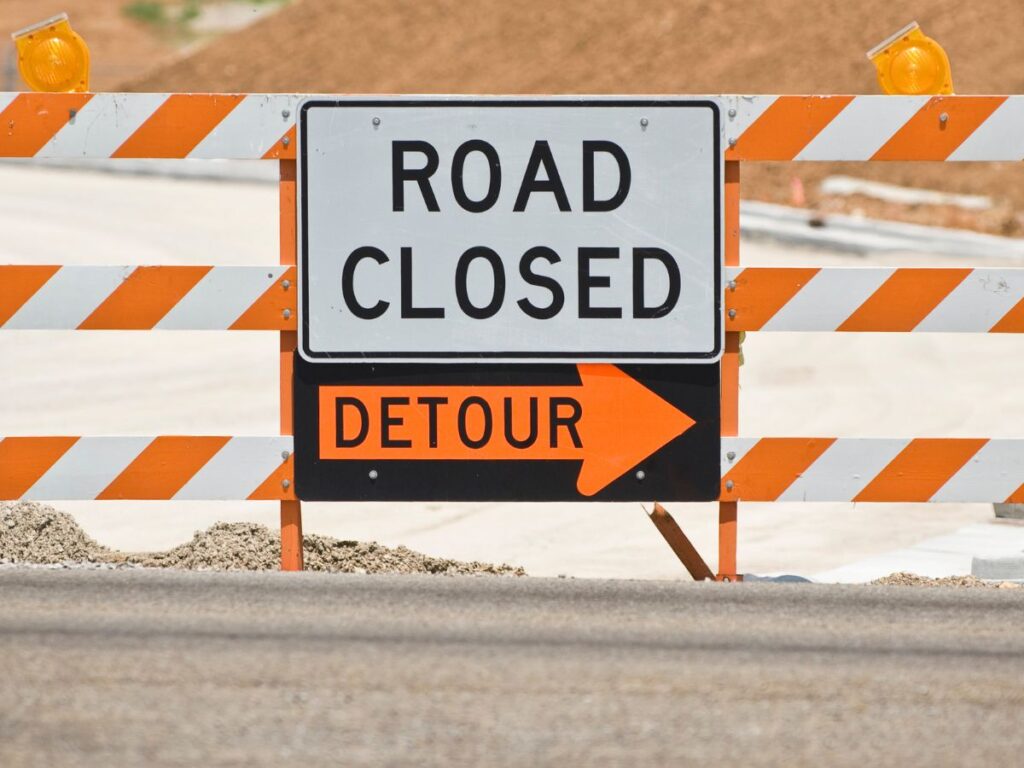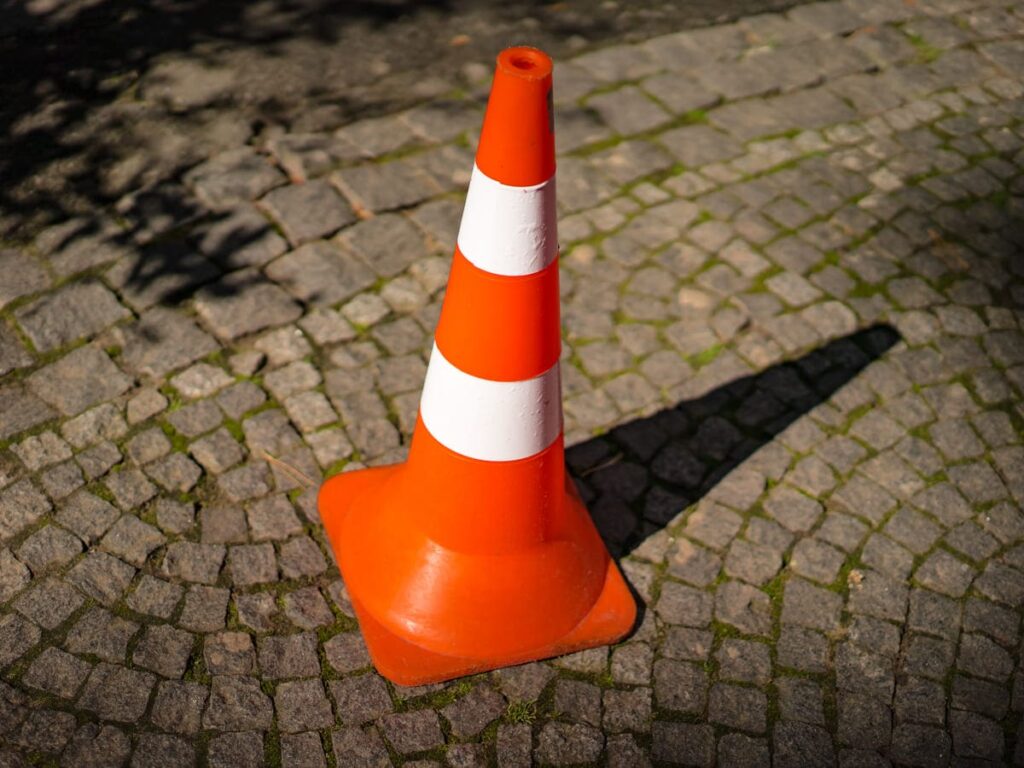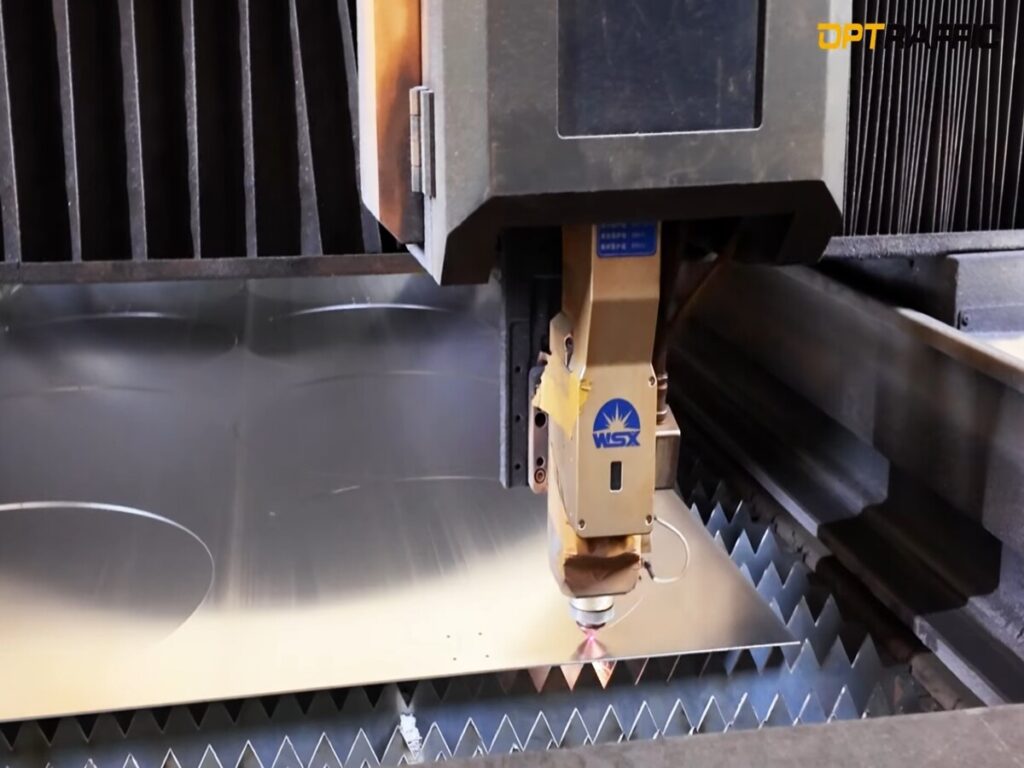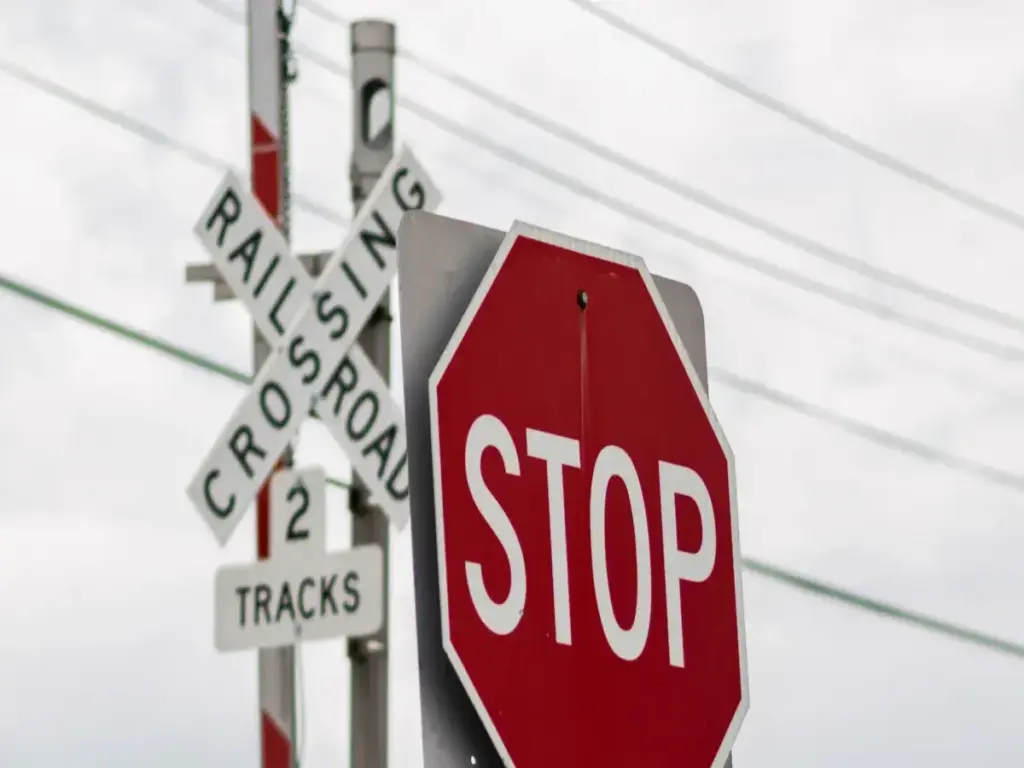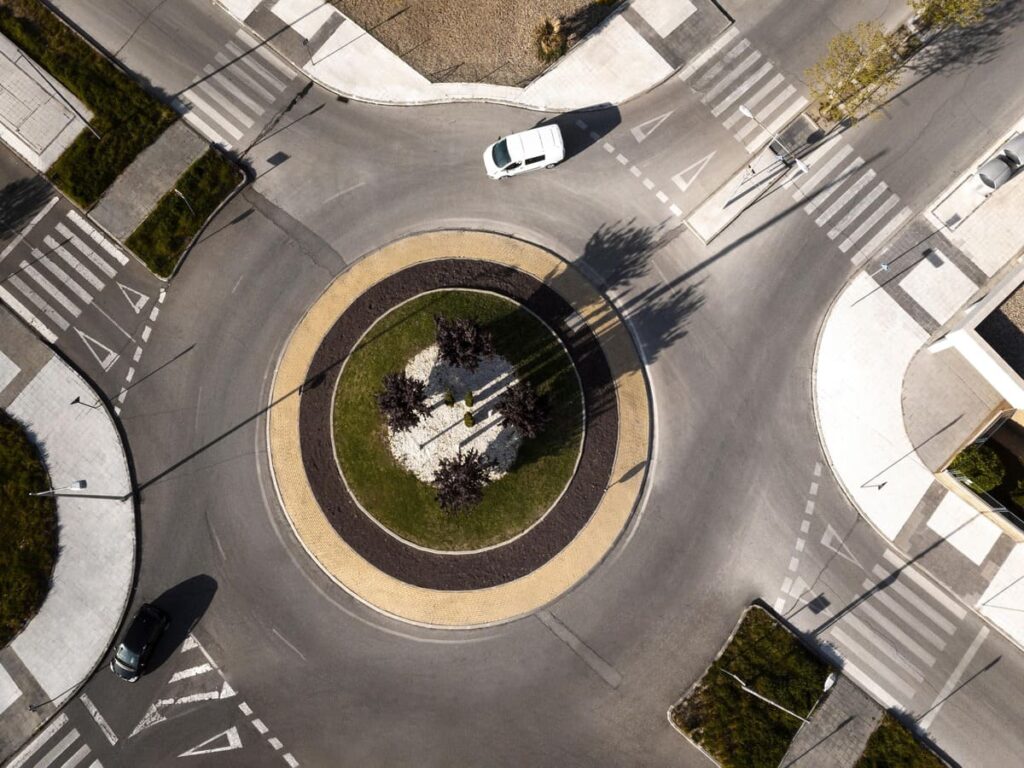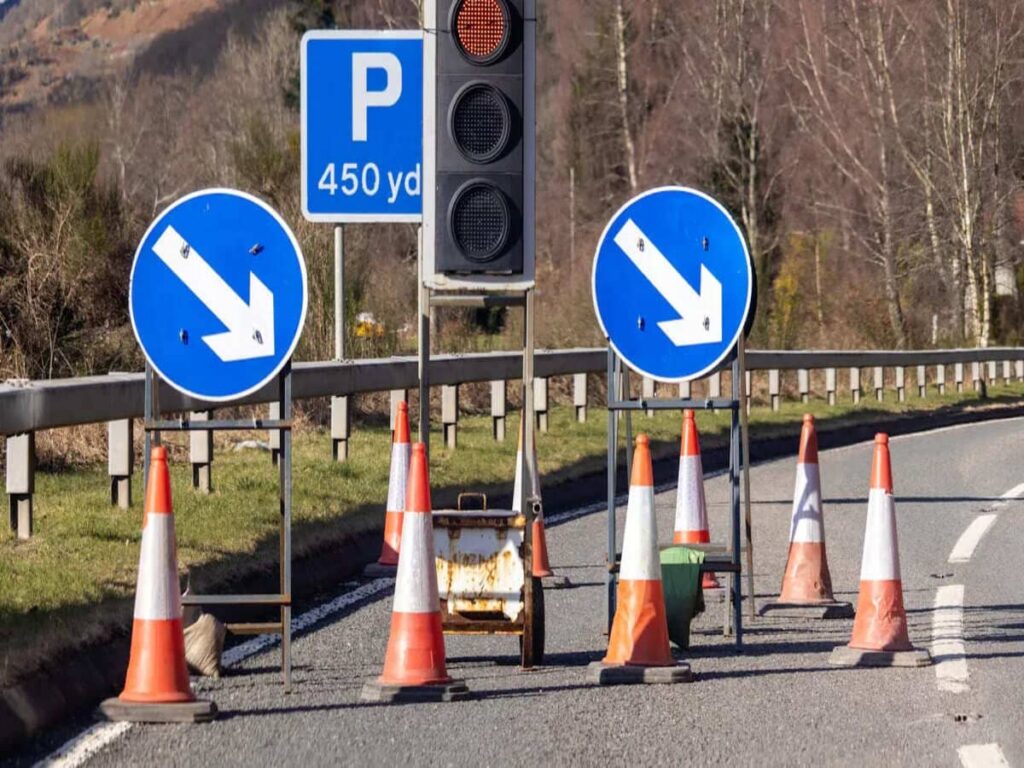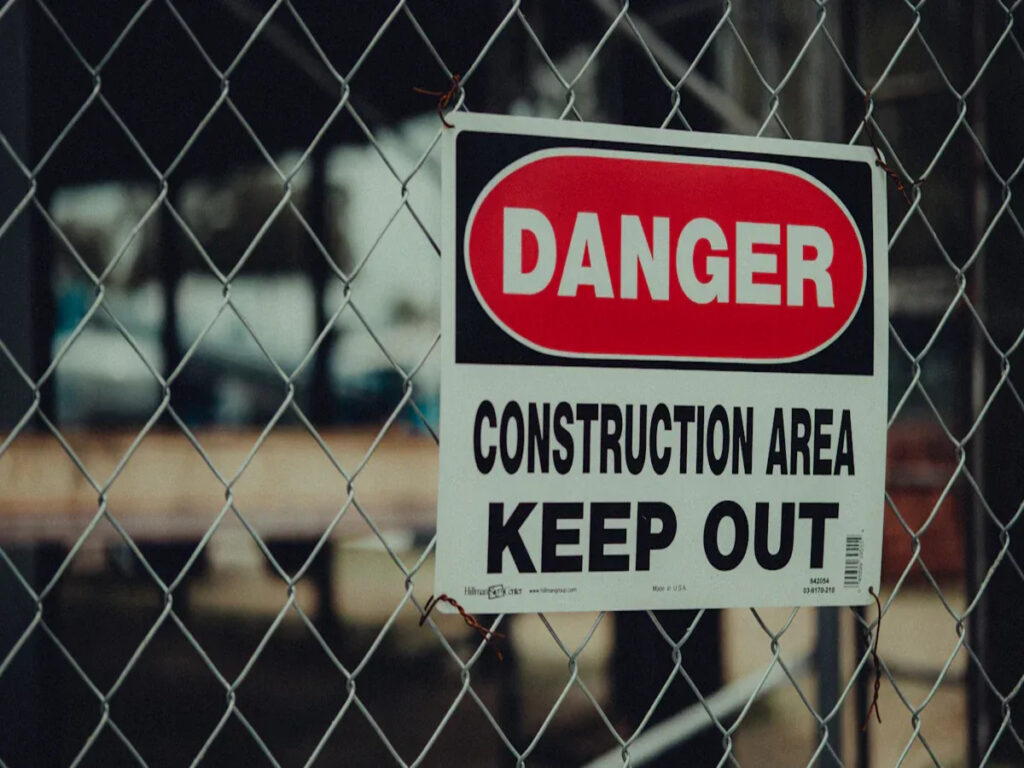
Vents violents peut causer des problèmes pour les cadres de panneaux de circulation portables. Ils pourraient tomber, endommager les choses, ou blesser les gens qui marchent ou conduisent. Les vents forts poussent fort sur les grands signes, Il est donc très important de les garder stables.
Les experts utilisent des outils pour étudier les risques éoliens, Comme l'intervalle de récidive moyen (IRM). Cet outil aide à prédire à quelle fréquence les vents forts pourraient se produire. Par exemple, Une inondation de 500 ans a un 9.5% chance de se produire dans 50 années. Cela montre que les événements rares peuvent toujours être puissants.
La sécurisation des cadres de panneaux de la bonne façon empêche les accidents et les fait durer plus longtemps. Se concentrer sur la sécurité et la force maintient les signes en place, Même par temps difficile.
Pour vous assurer que vos cadres de panneaux restent en sécurité et fonctionnent bien avec le temps, La maintenance appropriée est la clé. Explorez notre guide complet: Entretien et longévité des cadres de panneaux routiers Pour des conseils d'experts sur l'inspection, protection contre les intempéries, et prolonger la durabilité du cadre.
Principaux à retenir
- Choisissez des taches avec des bloqueurs de vent, comme des arbres ou des bâtiments, Pour garder les signes stables.
- Ajoutez des sacs de sable ou des bases en caoutchouc pour agrandir les signes et empêcher de tomber par des vents forts.
- Vérifiez souvent les panneaux pour les dommages et assurez-vous que les ancres ou les cordes sont serrées.
- Pendant les tempêtes, Retirez les signes légers et ajoutez du poids aux grands ou déplacez-les dans des endroits sûrs.
- Utiliser des conceptions de vent, comme des panneaux avec des trous, Pour réduire la force du vent et garder les signes stables.
Choisir le bon emplacement
Éviter les zones venteuses
Pour assurer la sécurité de vos cadres de panneaux, Choisissez un endroit moins venteux. Les endroits ouverts comme les autoroutes ou les plages ont souvent des vents forts. Essayez de ne pas mettre de panneaux dans ces domaines. Plutôt, Choisissez des endroits avec plus de protection contre le vent.
Si le mauvais temps arrive, prendre des soins supplémentaires. Retirez les petits signes qui ne sont pas nécessaires pour éviter les dommages. Les signes légers peuvent se casser facilement, Alors stockez-les à l'intérieur ou dans des endroits sûrs. Cette étape simple peut vous faire économiser de l'argent et de les réparer ou de les remplacer.
Utilisation de boucliers naturels
Des choses comme les arbres, buissons, ou les bâtiments peuvent bloquer les vents forts. Placez vos cadres de panneaux près de ceux-ci pour rester en sécurité. Par exemple, Mettre une pancarte derrière un mur fort peut arrêter le vent et le maintenir stable.
Dans les villes, Utilisez des choses comme des clôtures ou des bordures pour un soutien supplémentaire. Ceux-ci peuvent aider à empêcher les panneaux de tomber. Les panneaux extérieurs avec des formes spéciales ou des trous de vent sont également utiles. Ils abaissent les chances de basculer pendant les temps venteux.
Vérifier le terrain pour la stabilité
Le terrain sous votre cadre de signe est important pour le maintenir stable. Avant de le configurer, vérifier la surface. Terre maternelle, comme l'herbe ou la saleté, peut avoir besoin d'outils supplémentaires comme des chevilles ou des ancres. Mettez-les à un angle pour mieux tenir le vent.
Pour un terrain dur, comme le béton, Les bases en caoutchouc fonctionnent mieux. Ils donnent une base forte et cessent de glisser. Assurez-vous toujours que le sol est plat pour garder le poids même. Cela aide à arrêter de basculer. En vérifiant d'abord le sol, Votre panneau restera stable plus longtemps.
Utilisation d'outils de stabilisation
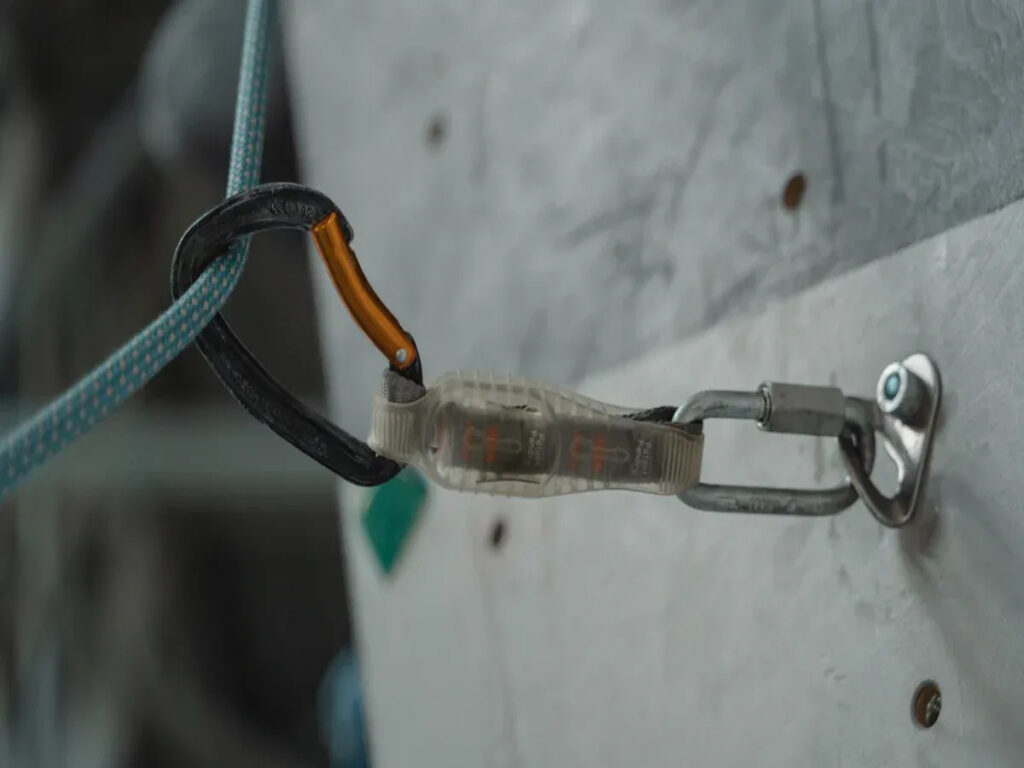
Garde cadres de panneaux de circulation Des vents forts stables ont besoin d'outils spéciaux. Ces outils ajoutent du poids, poignée, ou tenir pour arrêter de basculer ou de glisser. Voici quelques options utiles que vous pouvez essayer.
Des sacs de sable pour un poids supplémentaire
Les sacs de sable sont faciles et efficaces pour se stabiliser cadres de panneaux de circulation. Ils ajoutent du poids à la base, Se battre contre les vents forts. Utilisez des sacs scellés qui ne fuiront pas ou n'imprégèrent pas de l'eau. Chaque sac devrait peser environ 33 à 44 livres. Placer un ou deux sacs de chaque côté du cadre pour l'équilibre.
Pour une meilleure adhérence, Mettez des tapis en caoutchouc sous les sacs de sable. Cela les empêche de glisser sur des surfaces lisses comme du béton. Dans les zones venteuses, Vérifiez souvent les sacs pour éviter d'aplatir ou de dégâts d'eau.
Pour la pointe: Les sacs de sable fonctionnent très bien pour les configurations temporaires. Ils sont simples à déplacer et à régler, Les rendre parfaits pour une utilisation à court terme ou un temps changeant.
Plaques de base en caoutchouc pour les zones de la ville
Les plaques de base en caoutchouc sont idéales pour les espaces restreints et les surfaces dures dans les villes. Ils donnent une base forte pour cadres de panneaux de circulation Sans causer des risques de trébuchement. Ces assiettes pèsent 22 à 44 livres et ont des créneaux pour tenir fermement les jambes du cadre.
Les plaques en caoutchouc sont petites et réutilisables, Idéal pour des projets durée de plusieurs jours. Vous pouvez les empiler ou les utiliser avec des sacs de sable pour une stabilité supplémentaire. Sur le béton ou la chaussée plate, Ils offrent une excellente poignée et gardent le cadre stable.
Ancres moulues pour un sol mou
Un sol doux comme l'herbe ou la saleté a besoin d'ancres moulues pour tenir cadres de panneaux de circulation. Ces ancres creusent dans le sol et gardent le cadre en sécurité. Utilisez des ancres de 12 à 18 pouces de long et insérez-les à un angle pour une meilleure résistance au vent.
Les ancres fonctionnent bien avec des cordes ou des sangles pour maintenir le cadre stable. Ils sont parfaits pour les zones ouvertes avec des vents forts. Par exemple, Des outils comme le Vita Load Navigator peuvent gérer les rafales 35 mph. Cette technologie aide à prévenir le basculement ou la rotation, Garder le site en sécurité.
Dans des taches très venteuses, Mélanger les ancres avec des sacs de sable ou des assiettes en caoutchouc pour un soutien supplémentaire. L'utilisation de plus d'un outil garantit que votre cadres de panneaux de circulation rester en place, Peu importe la météo.
Techniques de renforcement
Garder les cadres de panneaux portables stables dans des vents forts est important. L'utilisation de méthodes de renforcement peut les rendre plus stables et sûrs. Voici quelques moyens faciles de renforcer vos cadres de signe.
Lignes de gars et méthodes de connexion
Les lignes de gars sont des cordes ou des câbles qui maintiennent des cadres de panneaux stables. Ils s'attachent au cadre et se connectent au sol ou aux objets à proximité. Cela propage la pression du vent uniformément et aide à arrêter de basculer.
Utiliser des lignes de gars, Vous avez besoin de cordes fortes et de points d'ancrage solides. Attachez les cordes au cadre et étirez-les vers l'extérieur pour un meilleur équilibre. Utilisez des cordes résistantes aux intempéries pour qu'ils restent forts sous la pluie ou le soleil.
Conseil: Vérifiez souvent vos lignes. Les lâches n'aideront pas beaucoup, Et les serrés pourraient nuire au cadre.
Vis et boulons pour l'ancrage sécurisé
Pour une prise plus forte, Vis et boulons travailler bien. Ils relient fermement le cadre à sa base ou au sol. Cette méthode est idéale pour les surfaces en bois ou en béton.
Percer les trous dans le cadre et la surface, puis fixez avec des boulons. Cela empêche le cadre de se déplacer ou de glisser dans des vents forts. Sur un sol doux, Utiliser les vis de terre. Ces ancres en spirale creusent profondément dans le sol et tiennent fermement. Ils sont faciles à installer et à éliminer, les rendre utiles pour les signes temporaires.
Double contrevenant pour les cadres de panneaux de trafic surdimensionnés
Les cadres de grands signes ont besoin d'un soutien supplémentaire en raison de leur taille. Le double contrevenant ajoute des barres ou des stabilisateurs supplémentaires pour rendre le cadre plus fort. Cela réduit la poussée du vent sur le signe.
Fixez des supports supplémentaires à l'arrière ou aux côtés du cadre. Utilisez des matériaux forts comme l'acier ou l'aluminium pour ces accolades. Pour encore plus de stabilité, Mélanger le double contrevenant avec des sacs de sable ou des lignes de gars. Cela maintient votre signe stable, Même dans des endroits très venteux.
Pour la pointe: Le double contrevenant est parfait pour les panneaux dans les zones ouvertes comme les autoroutes. Il donne la force supplémentaire nécessaire pour gérer les vents forts.
Considérations de conception résistante au vent
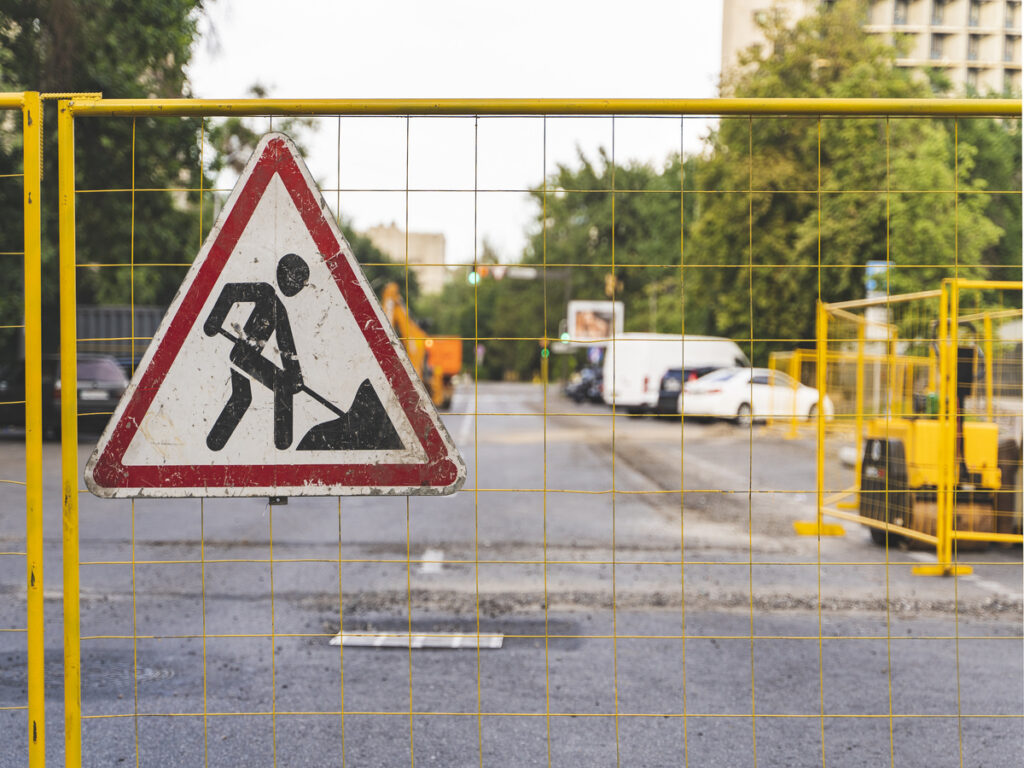
Cueillement des panneaux avec des trous
Les panneaux avec de petits trous sont parfaits pour les endroits venteux. Les trous laissent passer l'air, abaisser la pression du vent sur le signe. Cela arrête le “effet de voile,” où les panneaux solides attrapent le vent et l'automne. Ces panneaux fonctionnent bien dans des zones ouvertes comme les autoroutes ou les champs.
Des études montrent que des matériaux forts et une bonne conception aident ces panneaux à résister au vent. Par exemple, Les panneaux en aluminium ou en plastique dur gèrent la pression latérale mieux. Des recherches comparant les conceptions des murs ont révélé que les panneaux avec des trous résistent souvent mieux au vent que les solides.
| Type de conception | Ce qu'il fait | Comment ça fonctionne |
|---|---|---|
| Mur de cisaillement perforé | Mur avec des trous pour manipuler la pression latérale. | Fonctionne bien dans la plupart des conditions venteuses. |
| Mur de cisaillement segmenté | Mur solide pour plus de force. | Fort mais plus difficile à installer. |
L'utilisation de panneaux avec des trous rend les signes plus forts et meilleurs pour le mauvais temps.
Choisir des conceptions de faible poids
Garder le poids bas aide les panneaux à rester stables dans le vent. Lorsque le poids du cadre est près du sol, C'est plus difficile de faire basbuter. Utilisez des cadres plus courts ou ajoutez du poids à la base pour le faire.
Par exemple, Mettez des sacs de sable ou des plaques en caoutchouc au fond du cadre. Cela abaisse le centre de gravité et rend le signe plus stable. Dans des taches venteuses, Tous les conceptions qui maintiennent le poids bas et équilibré.
Utilisation des détenteurs de panneaux élastiques
Les détenteurs élastiques laissent les panneaux se pencher avec le vent au lieu de le combattre. Cela abaisse la contrainte sur le cadre et cesse de basculer.
Ces détenteurs sont courants dans des endroits avec des conditions météorologiques changeantes. Ils gèrent de fortes rafales sans trop se casser ou se pencher trop. Ils sont également faciles à configurer et à utiliser, les rendre super pour les signes temporaires.
En utilisant ces designs conviviaux, Vos panneaux resteront en sécurité et stable, Même par temps difficile.
Entretien et inspection
Prendre soin de vos cadres de panneaux portables les assurent en sécurité et utile. Des contrôles et des correctifs réguliers les aident à rester forts dans toutes sortes de temps.
Contrôles réguliers pour l'usure
Vérifiez souvent vos cadres de signe pour trouver des dégâts tôt. Chercher des fissures, rouiller, ou des pièces pliées qui pourraient rendre le cadre faible. Les chèques de nuit sont également utiles. Ils vous permettent de voir si les lumières ou les réflecteurs fonctionnent bien pour la visibilité.
Voici une simple liste de contrôle à utiliser:
- Y a-t-il des fissures ou de la rouille sur le cadre?
- Les lumières ou les réflecteurs fonctionnent-ils correctement la nuit?
- Le cadre est-il propre et exempt de saleté?
Conseil: Inspectez toujours les tempêtes ou les vents forts. Cela vous aide à résoudre les petits problèmes avant de s'aggraver.
Inspecter les ancres et les outils de stabilisation
Les ancres et les outils gardent vos signes stables dans des vents forts. Vérifiez-les souvent pour s'assurer qu'ils sont sécurisés. Pour les ancres au sol, Voyez s'ils sont serrés et n'ont pas bougé. Si vous utilisez des sacs de sable ou des bases en caoutchouc, assurez-vous qu'ils ajoutent encore suffisamment de poids et d'adhérence.
Le mauvais temps peut desserrer ou endommager ces outils. Après les tempêtes, Serrer les vis ou les boulons et remplacer rapidement les pièces cassées.
Pour la pointe: Gardez une petite boîte à outils à proximité pour les réparations rapides. Un peu d'effort peut maintenant empêcher de plus gros problèmes.
Rotation ou remplacement des sacs de sable
Les sacs de sable sont utiles mais ont besoin de soins pour bien fonctionner. Au fil du temps, Ils peuvent aplatir ou s'imprégner de l'eau, les rendre moins utiles. Les faire tourner souvent pour éviter l'usure inégale. Remplacer les sacs de sable endommagés ou humides par de nouveaux.
Utiliser scellé, des sacs de sable à l'épreuve des intempéries pour de meilleurs résultats. Ils durent plus longtemps et gèrent mieux le temps dur. Gardez des sacs de sable supplémentaires dans un endroit sèche afin que vous soyez prêt pour des changements météorologiques soudains.
Rappel: N'attendez pas le mauvais temps pour vérifier vos sacs de sable. Les soins réguliers maintiennent vos panneaux stables et sûrs, Même lorsque le temps est imprévisible.
Mesures d'urgence
Quand les tempêtes arrivent, Agissez rapidement pour protéger vos cadres de panneaux portables. Les vents forts peuvent rendre les signes dangereux, Donc, savoir quoi faire est important.
Retrait des panneaux par mauvais temps
Si des vents ou des tempêtes forts sont attendus, Retirez immédiatement les panneaux temporaires. Signes légers, bannières, et les drapeaux peuvent facilement être endommagés. Les abattre assure la sécurité de la zone et empêche les dommages.
Ramassez des articles en vrac près de vos panneaux, comme des outils ou des déchets. Ceux-ci peuvent voler dans les tempêtes et causer des dégâts. Les sécuriser protège à la fois vos panneaux et les personnes à proximité.
Pour des signes plus gros, Utilisez des sangles fortes ou des câbles en acier pour les maintenir stables. Ce soutien supplémentaire aide jusqu'à la fin de la tempête. Si vos panneaux utilisent l'électricité, Éteignez-le et couvrez-les de matériaux imperméables.
Conseil: Vérifiez toujours la météo avant de mettre en place des panneaux. Être prêt fait gagner du temps et évite les réparations coûteuses.
Ajouter du poids pour maintenir les signes stables
Quand les vents deviennent plus forts, L'ajout de poids à vos cadres de signe aide beaucoup. Les sacs de sable sont un moyen simple et rapide de le faire. Placez-les uniformément autour de la base pour un meilleur équilibre.
Les plaques de base en caoutchouc sont également un bon choix, Surtout dans les villes. Ils sont petits, réutilisable, et bien saisir sur les surfaces dures. Pour un terrain doux, Utilisez des ancres terrestres pour garder le cadre en sécurité. L'utilisation de ces outils ensemble rend vos signes plus stables pendant les rafales soudaines.
Si la tempête empire, Ajouter plus de poids. Utilisez des sacs de sable supplémentaires ou des plaques en caoutchouc pour une meilleure stabilité. Cela maintient vos signes en place, Même par temps difficile.
Déplacer des panneaux vers des endroits plus sûrs
Parfois, Déplacer vos panneaux est l'option la plus sûre. Les placer dans des zones à protection naturelle du vent, comme derrière les murs ou les bâtiments. Ces taches réduisent la pression du vent et abaissent les chances de basculer.
Évitez les zones ouvertes comme les autoroutes ou les champs pendant les tempêtes. Ces endroits sont plus exposés à des vents forts. Plutôt, choisir des emplacements avec un sol ferme et moins de vent.
Si le déménagement n'est pas possible, Retirez temporairement de gros panneaux. Les signes plus petits sont plus faciles à protéger et moins risqués. Une fois la tempête terminée, vous pouvez tout régler.
Rappel: Les signes déplacés ne consistent pas seulement à suivre les règles - il s'agit d'être préparé. Un peu de planification maintient votre configuration.
Garder les cadres de panneaux portables stables dans des vents forts est simple. Choisissez le bon endroit, Utilisez des outils comme des sacs de sable ou des ancres, et renforcer les cadres avec des cordes ou des lignes de gars. Designs de vent, comme des panneaux avec des trous ou des porte-étendus, Aidez beaucoup aussi.
Voici un guide rapide des méthodes utiles:
| Type de modèle | Poids (kg) | Meilleures méthodes de stabilisation |
|---|---|---|
| Modèle standard | 15 | Percez un trou pour un petit, boulon sécurisé |
| Grand modèle | 18 | Ajouter des sacs de sable pour rester stable dans les vents légers |
Vérifiez souvent vos panneaux de sécurité de la circulation pour les garder forts. Les petites correctifs arrêtent maintenant de plus gros problèmes plus tard.
FAQ
Comment puis-je garder les signes portables stables dans des vents forts?
Utiliser des sacs de sable, bases en caoutchouc, ou des ancres fortes pour tenir des signes. Ces outils ajoutent du poids et de l'adhérence, Arrêter les panneaux de tomber. Placez toujours les panneaux dans des endroits sûrs pour éviter de basculer.
Comment puis-je empêcher les panneaux de chaussée d'être volés?
Choisissez des panneaux avec des serrures ou des pièces de rechange pour éviter le vol. Ces fonctionnalités rendent plus difficile de prendre ou d'endommager vos signes. Vérifiez souvent vos panneaux pour vous assurer qu'ils restent en sécurité.
Les panneaux portables peuvent-ils fonctionner dans des endroits venteux?
Oui, Mais tu dois faire attention. Utilisez des conceptions conviviales comme des panneaux avec des trous. Signets sécurisés avec des ancres lourdes ou des sacs de sable. Placez-les dans des endroits sûrs avec une protection naturelle du vent.
À quelle fréquence dois-je vérifier mes panneaux pour la sécurité?
Vérifiez souvent vos signes, Surtout après les tempêtes ou les vents forts. Recherchez des pièces cassées, ancres lâches, ou d'autres dégâts. Les contrôles réguliers gardent vos panneaux en sécurité et fonctionnent bien.
Quel est le moyen le plus sûr de protéger les signes pendant les tempêtes?
Si une tempête arrive, déplacer les panneaux vers des endroits plus sûrs ou les abattre. Ajouter plus de poids, comme des sacs de sable, aide à les garder stables. Cela arrête les accidents et protège vos signes.

